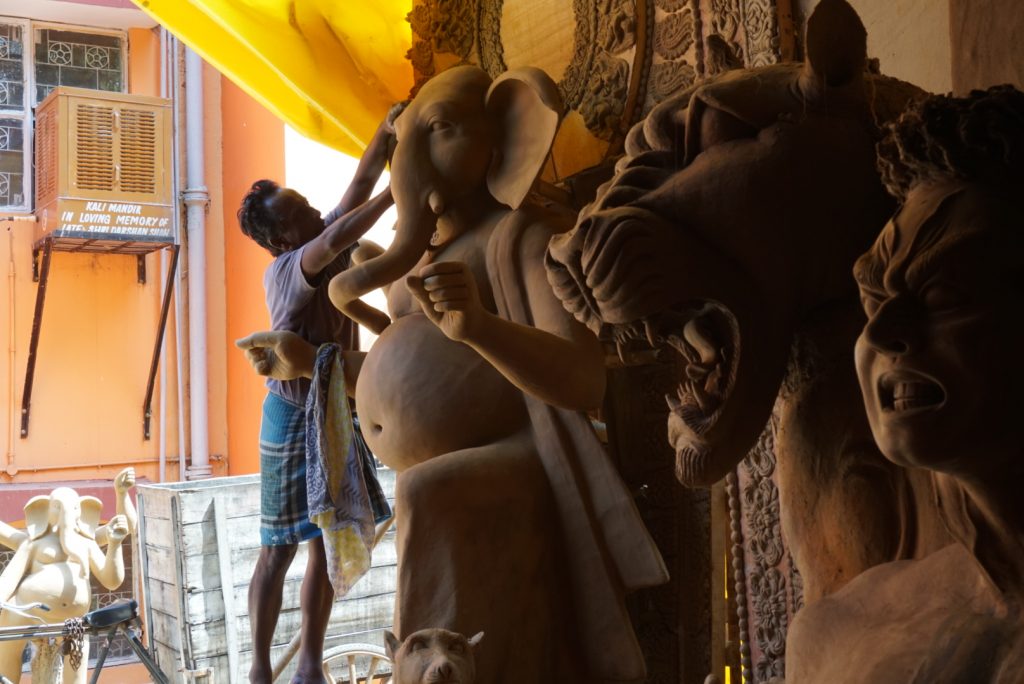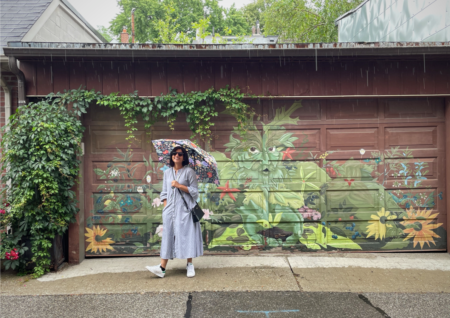The craft of idol making is being practiced in Bengal for almost three hundred years now. A visit to the ‘City of Joy’ during the Durga Pooja festivities is a treat to the eyes because of the exquisite and intricate idols and pandals that the city is covered with. Not just Kolkata but most of India, witnesses the magic crafted out by the hands of the potters from Bengal who go around the country to make and meet the demand for the Durga Idols that are the signature feature of this elaborate five day Indian festival, around the month of October every year.
The story of Kumartuli: Where it all started…
The craft of idol making is believed to have originated in a town called Kumartuli which literally translates into ‘Potter’s Locality’. Situated to the north of Kolkata, it nests 150 potter families and around 550 workshops that work round the year to produce hand crafted Durga Idols. It is situated on the banks of Hooghly River and is known for being the source of a particular variety of very smooth clay that is extracted from the beds of this river. It is popularly called “Ganga Maati” by the locals. This mud is an indispensable ingredient used in handcrafting the idols of goddess Durga.
The process of making the idols
The process of making these idols includes a series of activities carried out over a number of days by the craftsmen of Kumartuli. They typically start working between the months of June-August and wrap up their work before the Pooja starts. Clay is first mixed with straw and is applied over bamboo to built the basic skeleton of the idol. This skeleton is then either heated or sun dried to make it solid and hard. The clay from the river Hooghly (Ganga Maati) is then mixed with fine jute fibers and is applied over the dry skeleton to give a smooth finishing to the structure.
The heads of the idols are sculpted separately because of the intricate features incorporated in them as a part of the goddesses’ face. They are attached to the body just before the artisans start hand painting the idols. Since these idols are ceremoniously submerged in the river at the end of the Durga Pooja celebrations, everything right from the basic raw material to the final paints used by the potters of Kumartuli are biodegradable and completely organic.

Once the artisans are done painting these idols, they are adorned with clothes, jewelry and hair that are usually sourced from the “Bada Bazar” in Kolkata. The goddess is often made to wear a banarasi saree. Her jewelry is made of zari, brocade, paper, thermocol and sometimes even real gold. Since the festival of Durga Pooja celebrates the homecoming of Goddess Durga, the idols of her children – Ganesha (God of Wisdom and Prosperity), Saraswati (Goddess of Art), Kartikeya (God of War) and Lakshmi (Goddess of Wealth) are also made along with the main Durga idol for a set. The lion that the goddess rides on and the buffalo demon king that she is worshipped for defeating are also sculpted likewise.
In addition to these idols, many artisans even sculpt the nine manifestations of the goddess, worshipped during the Navratri Celebrations. The craft of making these idols is however more than just an art for the potters of Bengal. It is loaded with meaning and significance by following many ceremonial rituals as a part of the process of making these idols.
A ceremony is performed in honor of the God Ganesha before the construction of these idols begins. Since he is believed to be the God of Prosperity, these artisans find it important to seek his blessings as the craft is also the only source of livelihood for them.
Blindfolded Idol figures? Why?
Another custom followed while making these idols is the painting of the eyes of the Goddess on the auspicious day of Mahalaya which is a day before the Pooja begins. The face of the idol is blindfolded before that and is only uncovered on the day of painting the eyes with a religious ceremony and blowing of the conch shell. It is believed that when an artisan paints the eyes on the idol, he brings it to life.
Who is the goddess?
The idols of the eight armed goddess who is worshipped for being the slayer of asuras are then shipped to different places in and even outside the country, where they are installed on elegant sets in elaborate Durga Pooja Pandals. Each of these sets depicts a different mythological story of the Goddess who is believed to be the origin of all power in the universe.
Mud from the courtyard of a prostitute? : The legend
One of the most interesting rituals performed as a part of this craft, is using the mud from the courtyard of a prostitute to make the idols by mixing it with the smooth clay from the banks of Hooghly. This convention is guided by the belief that when a man enters a brothel, he leaves all his virtues at her doorstep. The soil of a courtesans’ courtyard is thus believed to be the purest and is called ‘Punya Mitti’. A potter or a priest is supposed to beg a courtesan for this soil according to the oral history of Bengal.
While some see this practice from the lens of tradition and Hindu values, others argue that it might be guided by an intention to ensure some form of social inclusion for these otherwise marginalized women. No matter how one tries to understand this tradition, the irony here is profound. The paradox lies in the contrast between the extreme reverence for the Goddess and the intemperate despise for the prostitutes on the same land.
As bewildering as these age old practices might sound, they represent the soul of Indian craftsmanship. The craftsmen from Bengal produce around four thousand idols every year. A majority of potters from a village called Krishnanagar travel to different regions across India and set up temporary workshops in areas including Chitranjan Park (Delhi) and Cox Town (Bangalore), a couple of months before the commencement of Durga Pooja.
No matter which part of the country the idols are made in, these artisans make it a point to carry the “Ganga Maati” with them to be used for the finishing of the idols so that the craft does not lose its authenticity. That is the beauty of the meaning they invest their craft with; they carry it with them everywhere.








